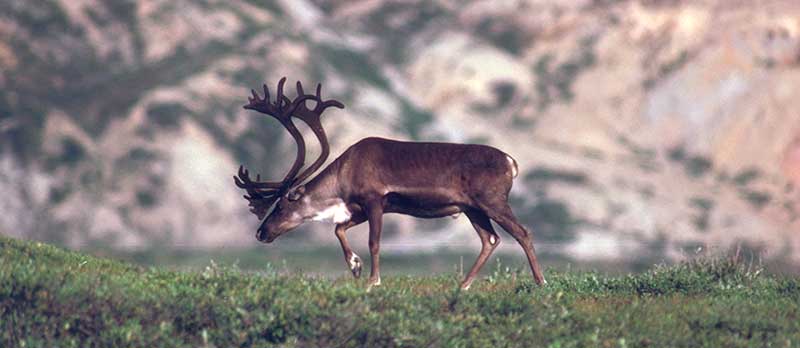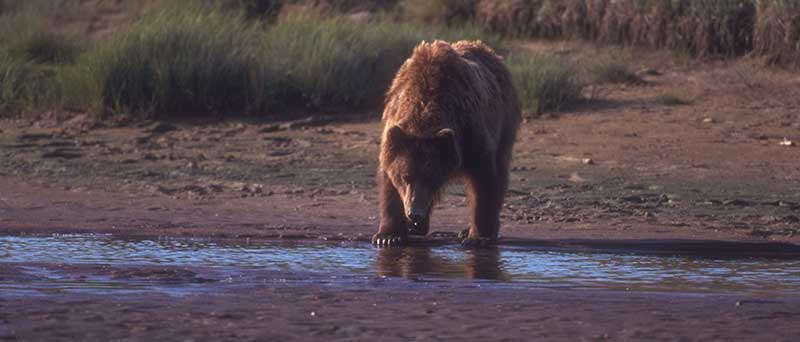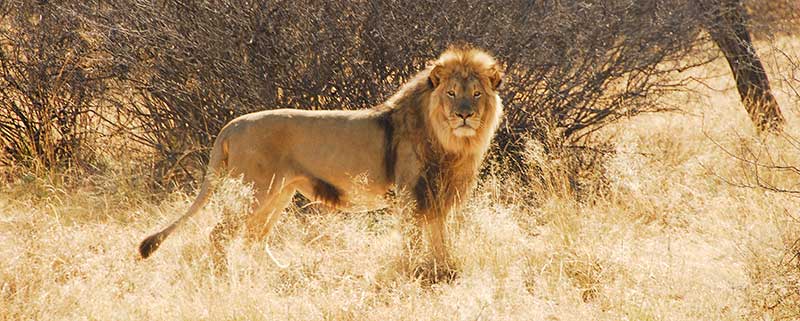A candid interview on the state of Guided Hunts
We asked Neil Summers and the crew from BSC some tough questions about affordability, shipping, even Cecil the Lion...

Loosing hunting opportunity is a big one. The loss of caribou hunting opportunities has worsened in recent years. With the closing down of Central Canadian Barren Ground caribou in the Northwest Territories a decade ago, and now the Quebec/Labrador caribou species having seen its’ last season of sport hunting; bowhunting opportunities are shrinking.
Lost opportunity is not only with caribou but other species too. For example, my partner Jay Osting tells me that in Alaska portions of the Brooks Range are now shut down due to a decrease in sheep populations and in the Northwest Territories large areas of sheep country have now been set aside for the expansion of Mackenzie National Park.
Most recently (as of April 1st, 2018) the newly elected government of British Columbia has made the political decision to close the sport hunting of the Grizzly bear in that province.
A lot of hunters are getting priced out of the market – 18k for a mountain caribou example – are you concerned about that?There are mountain caribou hunts that range from $11,000 to $18,000. Some outfitters may have to charge more to survive if they are paying off a $2.5 million dollar concession, where other outfitters who have their areas paid for, can charge less. Of course like anything else, outfitters whose areas consistently deliver on quality animals and success rates can charge more because of their reputation.

We don’t view bowhunting in general as something that the average income bowhunter is going to get priced out of. Bowhunters living in the USA can still hunt 5 species of deer, 2 species of elk, pronghorn, and black bear on guided hunts for a reasonable fee. The DYI option as well, is still an alternative for many of these species. It is a very small percentage of the millions of bowhunters in North America that are hunting multiple species in multiple states yearly. That is also true for those hunting outside the USA. Those that hunt sheep, big bears, Alaska Yukon moose etc. are spending upwards of $20,000 a year and sometimes more. For most people, just one of those hunts is a HUNT OF A LIFETIME. My partner Mark Buehrer said just the other day “Think back 35 years when a hunt in Alaska, or the Yukon, or even Northern British Columbia was $1500 - $2000. I was making $4/hour running a stamping press. That was 4 or 5 months of wages. Yes, some species are really expensive, but those same species have historically been expensive”.
What do you see as the top value these days in guided hunts?Value is in the eyes of the beholder. Black bear hunting, for example, is always exciting whether it is by spot and stalk, with hounds or a baited hunt. I think the “excitement value” can’t be beat on a quality bear hunt. Anyone who really wants to go can afford a $2500 - $5000 hunt – it may take 2 or 3 years to save up for it, but it’s within reach of vast majority of bowhunters.

Now that BC has banned grizzly hunting – do you expect to see other countries follow?
The BC closure of grizzly hunting was strictly political in a very liberal province. We have not heard of any discussion of changes in the Yukon or Northwest Territories. We don’t see grizzly or brown bear in Alaska being in a danger currently from this type of political action. We would hope that when a different government in BC gets voted in, then grizzly hunting could possibly open again. Time will tell.
I am noticing a lot more guides are refusing to take bowhunters – is this a growing trend?BSC has always sought out outfitters who either were favorable to bowhunting, or had guides who enjoyed guiding bowhunters, but no doubt – on average, bowhunters are more work for the outfitter. The fact of the matter is that it usually takes bowhunters more days to harvest an animal than a rifle hunter. Therefore guides work longer and harder to get bowhunters shot opportunities. Also bowhunters take less species than a rifle hunter on a combination hunt, thus the outfitter will make less on his combo type hunts. Some outfitters value the effort and integrity of bowhunting clients, but some outfitters view bowhunters as a pain but will still take them. Obviously the latter is not someone you want to hunt with.
Getting trophies home both domestic and abroad?When possible, on hunts in North America, take the trophy home with you. Paying excess luggage fees is generally a lot less expensive than having it crated, hides prepared, and shipped after the season. Sometimes it’s not possible – when that’s the case – trust your outfitters recommendation – they do it all the time and know what works best.
There is no secret on getting your trophies home from international hunts, just be prepared for a long wait (sometimes a year or more depending on the country). The cost of getting trophies back from international hunts is significant. The best advice is two fold: 1) Before you go, get an estimate for trophy preparation, crating, documentation and shipping from the expediter and /or taxidermist in the country of origin. That way you won’t be surprised by the Invoice and 2) Use a reliable Customs broker here in the US or Canada for your shipment. They can best answer questions about what Import Permits you may or may not need as well as any other important procedural information.

Has ‘Cecil the Lion’ negatively affected the market for Big-5 African hunts?
Without a doubt “The Cecil effect” has caused a huge ripple in the Big-5 opportunity for bowhunters. Since the incident the Zimbabwe National Parks stopped issuing the Special bowhunting permits for all dangerous game species with the exception of Leopard. The future of them reinstating those Special Bowhunting permits for the rest of the Big Five is unknown. It also doesn’t help that currently the USFW has a ban on the importation of sport hunted elephant ivory and lion. Now it seems that the Leopard is the next animal the anti hunters are targeting.
What hunt would you recommend for a guy looking to spend 20k for a once in a lifetime bowhunt?It depends on what interest the individual hunter. You really can’t hunt sheep anymore for $20,000 unless you draw a tag “out west”. If a mountain hunt in wild backcountry is something you would enjoy, then Goat hunting is a fabulous (but tough) hunt. Goat hunts prices range from $11K to $17K. You can also do a good grizzly hunt, or Alaska / Yukon moose hunt in that $20,000 range.
Internationally you could do an African Plains game hunt for 6 or 7 animals depending on the species for under $20K or a Cape buffalo hunt in some parts of Africa for that same $20K. One could hunt the different Ibex species in Spain, Turkey for Bezoar Ibex or Mongolia’s Gobi Ibex. Any of these Ibex hunts can be done for $20K or less. One could also hunt for Asiatic water buffalo in Australia or Red stag in New Zealand as well as a multiple species hunt in Argentina. All these international hunts mentioned above fit within the cost parameter.
For full pricing details you can view our Hunt Catalog On Line at bowhuntingsafari.com
What are your thoughts on hunt deposits and contracts?The majority of North American outfitters want a 50% deposit to secure a spot for the following season. Many of our outfitters only request 25% if the hunt is booked 2 years out; the other 25% due in the year of the hunt. Final balance payments can be due 30 or 60 or as much as 90 days before the hunt starts or even paid when you arrive in camp. The outfitters policies are all different and sometimes a deposit / hunt payment timetable can be negotiated.
The vast majority of outfitters have contracts, but not all.
Some of our smaller outfitters that we have worked with for 20+ years just have you sign a waiver / contract when you get to camp. We provide a Hunt Confirmation Sheet with all details on the hunt, price, payments, dates, travel details etc. and the outfitter gets a copy of this as well.
On many of the International hunts deposits are requested at 50%. The deposits are placed in the BSC Client Trust Account for safekeeping and funds are only released to the outfitter in the year that you hunt. This can be a hedge against the changing political climate that can occur in foreign countries. This can be especially valuable when hunts are booked 2 years ahead of time. This account can also be used to set up a Trophy Fee & Expense Account, which allows clients to keep funds dedicated to his or her hunt here in the USA. This allows the client to not have to travel with large amounts of cash to cover expenses and trophy fees when hunting overseas.
What message would you like to send to clients who are new to guided hunts?Have realistic expectations. Some guys believe that since they are booking a guided hunt “they are going to kill something”. A LOT of success depends on the bowhunters ability regardless of how good the guide is. We tell potential clients who ask about success rates, “it’s like basketball, some bowhunters play at a NBA level, others play at a College level still others at the High School level.” Your individual hunting skills are what translate into success.
We also urge clients to have a realistic assessment of their physical limitations and capabilities. For example booking mountain bowhunts for goat or sheep (elk too) requires a high level of fitness. One must be prepared to put in the time at the gym if you have any hope of success. It does not matter if you have a good guide and a great area; you still have to be able to climb the mountain everyday.
What are the pitfalls that most hunters fall into when booking hunts?It has been said that not all inexpensive bowhunts are bad, nor are all expensive bowhunts good, but know what you are buying. Shopping only the price is a mistake, instead you should shop value. Comparing price requires evaluating the services being rendered, game density & trophy potential and finally the number of shot opportunities one could expect (within your effective range).
Some hunters fail to get qualified references. An example of unqualified references are those who have only hunted the species or a specific area once. One hunter, going to one particular camp, a particular week, and have a fabulous hunt doesn’t ensure that the outfitter has a consistently well run operation with quality leadership, solid track record, and good guides.
Another problem is only checking the reference list provided by the outfitter. These references will likely be of successful hunters but we maintain that one should request references of bowhunters who did not harvest an animal on his hunt. This way you will likely get a better picture.
Another pitfall is that some bowhunters that haven’t had the opportunity to travel and pursue other species other than maybe their whitetails at home, end up with high expectations from watching hunting shows on TV. Many of these shows make elk hunting look easy for example, which fosters high expectations.
What is your greatest fear surrounding the guided hunt industry?The answer is Bowhunting being under attack from the Anti’s. Honestly the apathy that a large portion of our bowhunting brothers and sisters have, is of great concern. Many don’t belong to organizations that effectively fight for their right to hunt. Every hunter should belong to a Conservation / Hunter Protection organization (State Bowhunting organizations, Pope & Young, Safari Club International, to name a few). If we aren’t part of the solution in fighting the Anti’s, we are part of the problem.
What do you see as the bright spots for guided hunts in the future?Wildlife management today is as good as it has ever been throughout North America and the world. We are optimistic about the future of bowhunting, as long as bowhunters get involved and stay engaged.
Tell us about Bowhunting Safari Consultants?
I started bowhunting in 1975 in my home state of Oregon pursuing local game (Blacktail & Mule deer, Elk, Black bears, etc.) Soon after, I also began venturing out of state and then overseas, seeking bowhunting adventure.
In 1986 I founded Bowhunting Safari Consultants (BSC), a booking agency that organizes bowhunting trips worldwide. Since inception, I have bowhunted 27 different countries and specialize in making recommendations and booking International bowhunts.
My partners Mark Buehrer and Jay Osting handle BSC’s recommendations for North American species. Their extensive travels and decades of bowhunting experience make them uniquely qualified to advise clients which outfitters can best meet their needs and deliver on expectations.
BSC now offers recommendations for close to 150 bowhunts worldwide. We are always on the lookout for outfitters and guides that have a keen interest in taking bowhunters. Our team of consultants and advisors are a great resource for our clients and is likely the most well traveled group ever assembled.
In our collective opinion, the dilemma of choosing a guide/outfitter is simplified when you can rely on an informed third parties recommendation.




